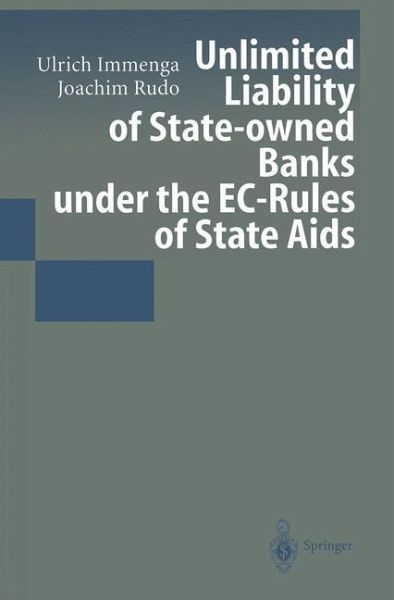
Unlimited Liability of State-owned Banks under the EC-Rules of State Aids
Versandkostenfrei!
Versandfertig in 6-10 Tagen
38,99 €
inkl. MwSt.

PAYBACK Punkte
19 °P sammeln!
The applicability of EC law of state aids to the state`s unlimited liability for Savings Banks and "Landesbanken" is controversial. Legal and political discussions following the Maastricht-II-Treaty tend to assume that liabilities have to be qualified as state aids. However, as the liabilities in question derive from public ownership, they have to be distinguished from securities for corporate debts which might be qualified as state aids under EC law. In this context the book discusses state aids to public companies and the private investor test of the EC Court of Justice. The authors question...
The applicability of EC law of state aids to the state`s unlimited liability for Savings Banks and "Landesbanken" is controversial. Legal and political discussions following the Maastricht-II-Treaty tend to assume that liabilities have to be qualified as state aids. However, as the liabilities in question derive from public ownership, they have to be distinguished from securities for corporate debts which might be qualified as state aids under EC law. In this context the book discusses state aids to public companies and the private investor test of the EC Court of Justice. The authors question the EC Commission`s concept to quantify refinancing advantages which are supposed to be achieved by virtue of public liability.














